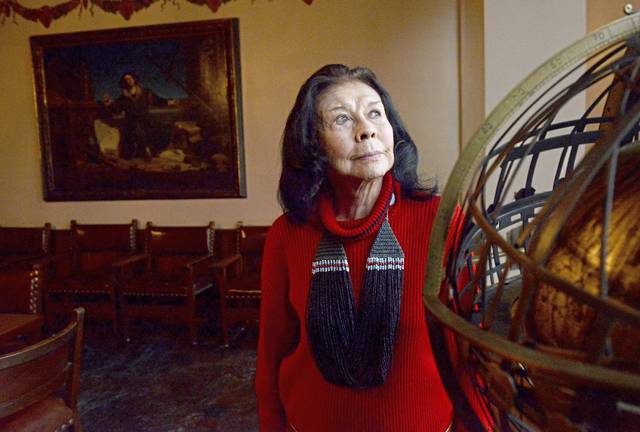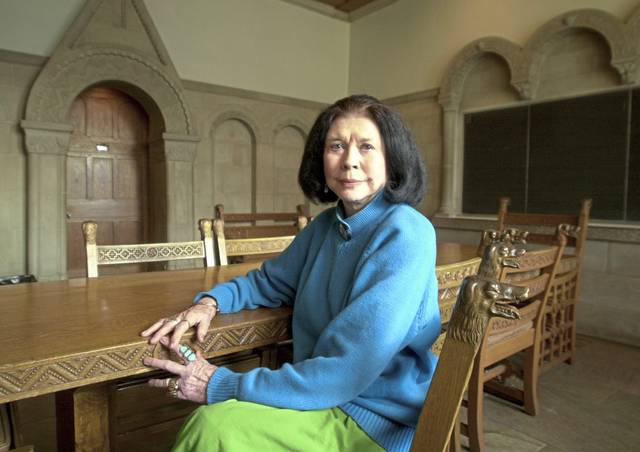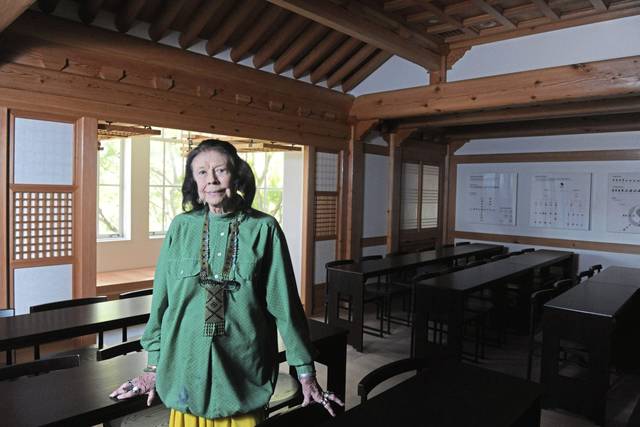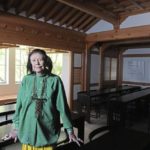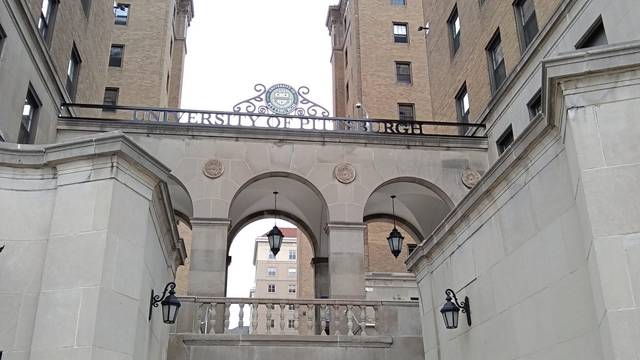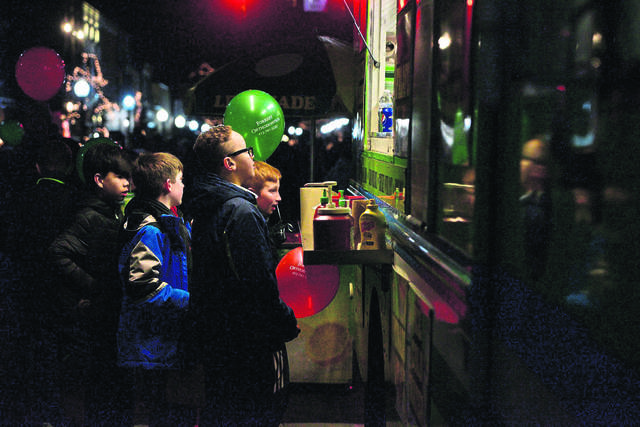The University of Pittsburgh’s Nationality Rooms have been described as “31 mini-museums” representing Pittsburgh’s ethnic communities.
They are one of the best known features of the school’s Oakland campus, bringing in some 25,000 visitors from around the world each year. And reviewers on the travel site TripAdvisor have ranked the rooms as the No. 5 museum attraction in the Steel City.
Not as well known, perhaps, is the small, dark-haired woman whose large vision has given those rooms the heft to survive, thrive and grow in number.
E. Maxine Bruhns, who has spent the past 54 years working as the director of the Nationality Rooms, officially retired in early January at the age of 96. Pitt made the announcement earlier this week, and for the university Bruhns served so tirelessly it must have seemed a bit surreal.
“The rooms and she became inseparable,” said Michael Walter, tour coordinator for the Nationality Rooms. He worked with Bruhns on a walkabout tour of the Rooms during the holidays.
“I never really heard Maxine speak about hobbies outside of work. It wasn’t a job. It wasn’t something where she checked out at the end of the day,” he said. “Sometimes I’d be here at 5:30 and she’d call me. She didn’t really stop. And I can only think that that is borne out of a deep, abiding affection for what she did, to believe in the nobility of the mission.”
Bruhns has been a fixture on the Pitt campus since 1965 when she and her husband, the late Fred C. Bruhns, moved to Pittsburgh so that he could finish his doctorate and teach at Pitt’s Graduate School of Public and International Affairs. At the time, Maxine Bruhns had taken a job as executive secretary of the cultural and educational exchange committee, but shortly thereafter she became the director.
It proved to be a perfect fit for a woman who had spent the previous 15 years traveling around the world with her husband, who worked with the U.S. State Department, USAID and the International Refugee Organization. They lived in Lebanon, Jerusalem, Vietnam, Cambodia and Iran among other places. During that time, Bruhns completed her master’s degree and taught English.
“She was full of enthusiasm because she spent 15 years living abroad,” said Maryann Sivak, assistant to the director of the Nationality Rooms and a personal friend of Maxine’s. “She saw the potential. It was like a diamond in the rough, and she felt she could make it better.”
The concept for the Nationality Rooms was conceived by Pitt Chancellor John Gabbert Bowman in 1926, the year construction crews broke ground on the 42-story Cathedral of Learning. They were meant to function as classrooms while showcasing the cultures of Pittsburgh’s immigrant populations.
Among the first rooms dedicated were the German, Russian, Scottish and Swedish rooms in 1938, followed by the Czechoslovak, Yugoslav, Hungarian and Chinese rooms in 1939 and the Polish and Lithuanian rooms in 1940.
When Bruhns started at Pitt, 19 rooms had been completed with no plans for any more.
“When Maxine came to Pitt, the Nationality Rooms were considered to be done. It was basically (a matter of) maintaining them,” Sivak said. “She revived them. I mean it was almost like a phoenix out of the ashes because she stimulated interest.”
The first room created by Bruhns was the Israel Heritage Room. She made several trips to Israel before the room was dedicated in 1987. For subsequent rooms, Bruhns made trips to Austria, Japan, India and Ukraine, ultimately creating a dozen new rooms: African Heritage, Armenian, Austrian, Indian, Israel Heritage, Japanese, Korean Heritage, Philippine, Swiss, Turkish, Ukrainian and Welsh.
Today, the Nationality Rooms are collectively designated a historical landmark by the Pittsburgh History and Landmarks Foundation.
Sivak said the rooms would not have achieved the status they have without Bruhns.
“She had a vision, and she was way ahead of her time,” Sivak said. “All 12 rooms on the third floor, except for the Early American Room, are her creation.”
Sivak said Bruhns had an uncanny ability to interact with people and that those skills were vital when it came to keeping the rooms pristine.
“She made friends with the groundskeepers and the cleaning crew so if anything needed to be done, all she had to do was just pick up the phone. And when she called they came the same day — be it carpenters, the cleaning lady, whatever. She established a special relationship with them.”
In a farewell statement in the fall issue of the university’s Nationality Room newsletter, Bruhns said a series of setbacks in her health led her to retirement.
In the statement, she reflected on her years abroad and her role at Pitt.
“I survived all of these different moves with no tragedies and learning not to hate but always appreciating the culture in which I was living,” Bruhns wrote. “I brought that back with me and found this marvelous job where I used those experiences to establish a legacy that will continue beyond my time with you.
“These rooms and programs that are so dear to me will remain my greatest accomplishment.”
Bruhns said she plans to write a book as part of her retirement activities.
Meanwhile, the search for a new director is in its early stages. Sivak said Bruhns will be difficult to replace.
“To do exactly what she has done would be impossible,” she said.


